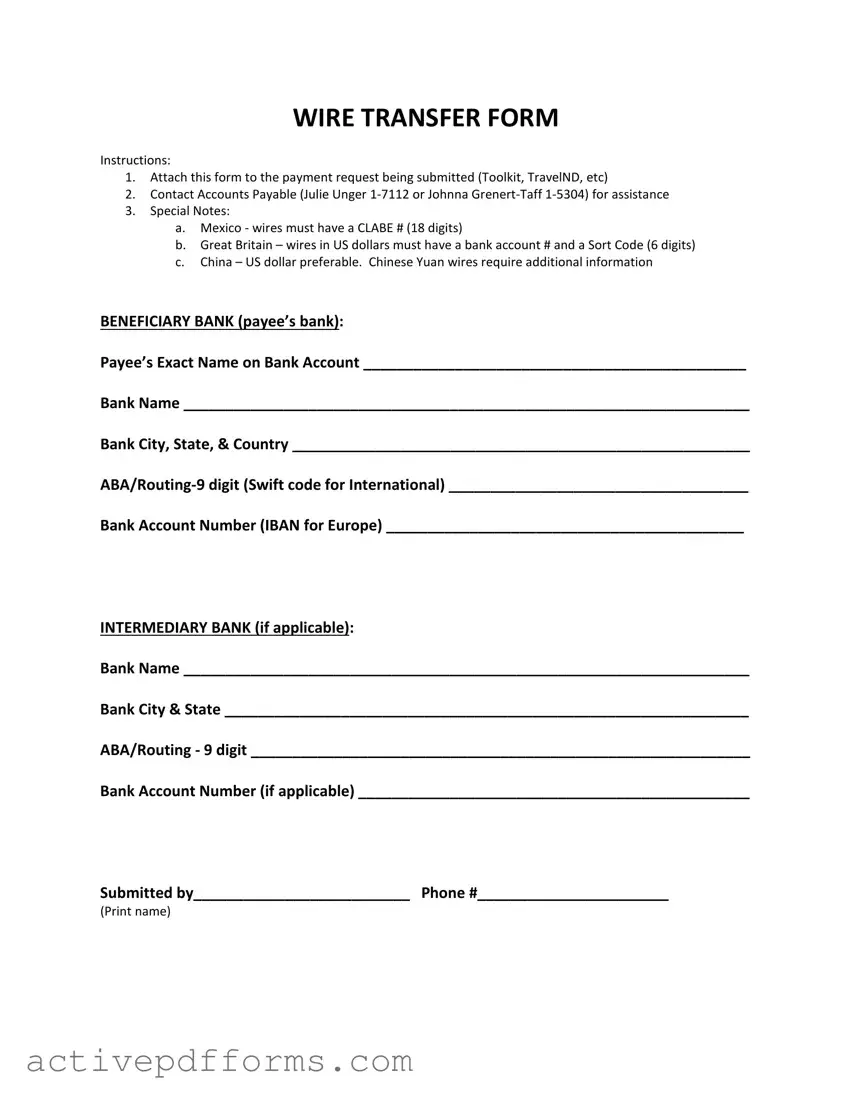WIRE TRANSFER FORM
Instructions:
1.Attach this form to the payment request being submitted (Toolkit, TravelND, etc)
2.Contact Accounts Payable (Julie Unger 1-7112 or Johnna Grenert-Taff 1-5304) for assistance
3.Special Notes:
a.Mexico - wires must have a CLABE # (18 digits)
b.Great Britain – wires in US dollars must have a bank account # and a Sort Code (6 digits)
c.China – US dollar preferable. Chinese Yuan wires require additional information
BENEFICIARY BANK (payee’s bank):
Payee’s Exact Name on Bank Account ______________________________________________
Bank Name ____________________________________________________________________
Bank City, State, & Country _______________________________________________________
ABA/Routing-9 digit (Swift code for International) ____________________________________
Bank Account Number (IBAN for Europe) ___________________________________________
INTERMEDIARY BANK (if applicable):
Bank Name ____________________________________________________________________
Bank City & State _______________________________________________________________
ABA/Routing - 9 digit ____________________________________________________________
Bank Account Number (if applicable) _______________________________________________
Submitted by__________________________ Phone #_______________________
(Print name)
